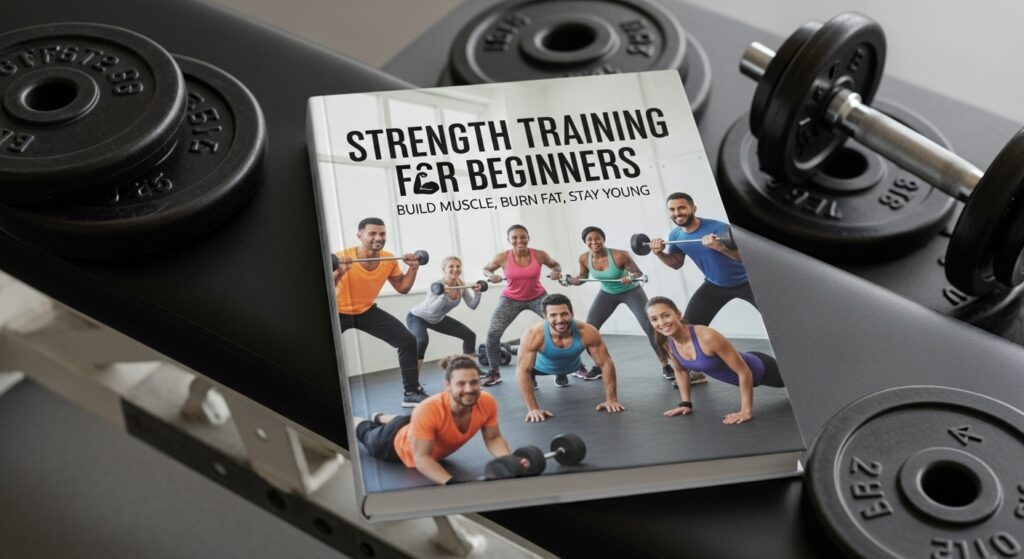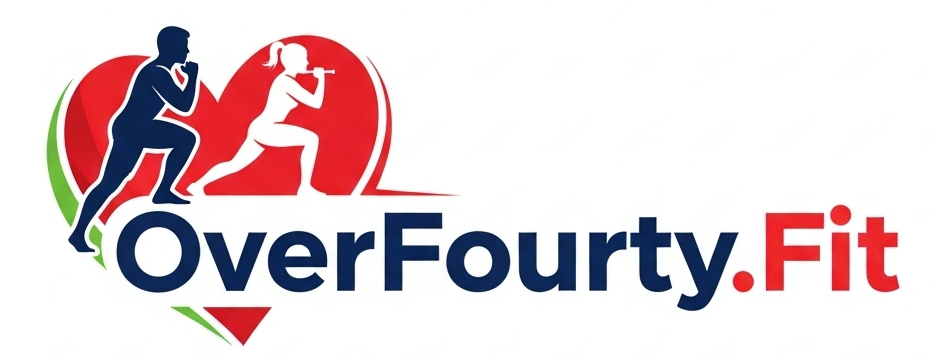Strength Training for Beginners Over 40: Build Muscle, Burn Fat, Stay Young
Turning 40 isn’t the end of your fitness journey; in fact, it can be the start of your strongest years yet.
As we age, we naturally lose muscle mass (a process called sarcopenia), which slows our metabolism and affects daily strength. The good news? Strength training can reverse these effects, boost energy, and keep you moving with confidence.
If you’ve never lifted weights before (or it’s been a while), this guide will walk you through safe, beginner-friendly strategies that protect your joints while building strength.
Why Strength Training Is Essential After 40
- Maintains Muscle Mass – Prevents age-related muscle loss.
- Boosts Metabolism – More muscle means more calories burned, even at rest.
- Strengthens Bones – Weight-bearing exercises help prevent osteoporosis.
- Improves Balance & Mobility – Reduces risk of falls and injuries.
- Supports Joint Health – Strong muscles protect your joints from excess stress.
Strength Training Myths After 40
- “It’s too late to start.” – You can build strength at any age.
- “Lifting weights is dangerous.” – With proper form and progression, it’s one of the safest activities.
- “I’ll get bulky.” – Building large muscles requires years of intense training; strength training will make you lean and toned.

Beginner-Friendly Strength Training Exercises
These exercises target all major muscle groups and can be done 2–3 times per week.
1. Bodyweight Squats
- Muscles worked: Quads, hamstrings, glutes
- How to do it: Stand with feet shoulder-width apart, lower hips down and back as if sitting into a chair, then return to standing.
- Reps: 10–15
2. Wall Push-Ups
- Muscles worked: Chest, shoulders, triceps
- How to do it: Stand facing a wall, place your hands at shoulder height, and slowly bend your elbows to bring your chest toward the wall, then push back.
- Reps: 8–12
3. Dumbbell Rows
- Muscles worked: Back, biceps
- How to do it: Hold a dumbbell in one hand, hinge forward slightly, and pull the weight toward your torso, keeping your back flat.
- Reps: 8–12 each arm
4. Glute Bridges
- Muscles worked: Glutes, hamstrings, lower back
- How to do it: Lie on your back, knees bent, feet flat. Lift your hips until your body forms a straight line from your shoulders to your knees.
- Reps: 10–15
5. Standing Overhead Press (Light Dumbbells)
- Muscles worked: Shoulders, triceps
- How to do it: Hold dumbbells at shoulder height, press them upward until your arms are straight, then slowly lower.
- Reps: 8–10
How to Start Safely
- Begin with Bodyweight: Master form before adding weights.
- Progress Gradually: Increase weight or reps slowly.
- Rest Between Sessions: 48 hours between working the same muscle group.
- Warm Up First: 5–10 minutes of light cardio + dynamic stretches.
- Listen to Your Body: Stop if you feel sharp pain (muscle burn is okay, joint pain is not).

Weekly Beginner Strength Training Plan
Day 1: Full-body strength workout
Day 2: Rest or low-impact cardio
Day 3: Full-body strength workout
Day 4: Rest or light activity
Day 5: Full-body strength workout
Day 6–7: Rest or active recovery
Tips to Maximize Results
- Prioritize Protein: Aim for 1.2–1.6g of protein per kg of body weight.
- Stay Hydrated: Muscles function more efficiently when well-hydrated.
- Track Your Progress: Use a notebook or app to log exercises and weights.
- Mix in Flexibility Training: Yoga or stretching keeps you mobile.
Benefits You’ll See in 8–12 Weeks
- Increased muscle tone
- Faster metabolism
- Stronger posture and core
- Easier daily activities
- More energy and confidence
Final Thoughts About Strength Training for Beginners Over 40
Starting strength training for beginners over 40 is one of the best investments in your long-term health. You don’t need to spend hours in the gym; just consistent, proper training 2–3 times per week can make a big difference in strength, mobility, and overall well-being.
FAQs about Strength Training for Beginners Over 40
Is 40 too late to start strength training?
Not at all, 40 is a perfect age to begin strength training. Research shows that people can build muscle and strength well into their 60s and beyond. Starting in your 40s helps preserve lean muscle, support bone health, and improve metabolism. With proper form, progressive training, and recovery, strength training is safe and highly beneficial at this stage of life.
What is the 3-3-3 rule gym?
The 3-3-3 rule in the gym is a training guideline where you perform 3 sets of 3 exercises with 3 minutes of rest between sets. It’s often used for building strength, as the longer rest allows muscles to recover fully before the next set. This approach emphasizes quality over quantity, focusing on heavier lifts and controlled movements.
How often should you strength train in your 40s?
Most people in their 40s benefit from 2–4 strength training sessions per week. This frequency allows enough stimulus for muscle growth while giving your body the recovery it needs. Beginners can start with two full-body workouts per week, while more experienced lifters may prefer a split routine (upper/lower body or push/pull/legs). Listening to your body and allowing proper rest is key to avoiding overtraining.
What is the 5-3-1 rule in gym?
The 5/3/1 rule is a popular strength training program created by Jim Wendler. It focuses on four main lifts: squat, deadlift, bench press, and overhead press. The rep scheme is:
Week 1: 3 sets of 5 reps (5)
Week 2: 3 sets of 3 reps (3)
Week 3: 5 reps, 3 reps, 1 rep (5/3/1)
The program uses progressive overload to gradually increase strength over time. It’s effective, but typically recommended for intermediate and advanced lifters who already have a solid foundation.







